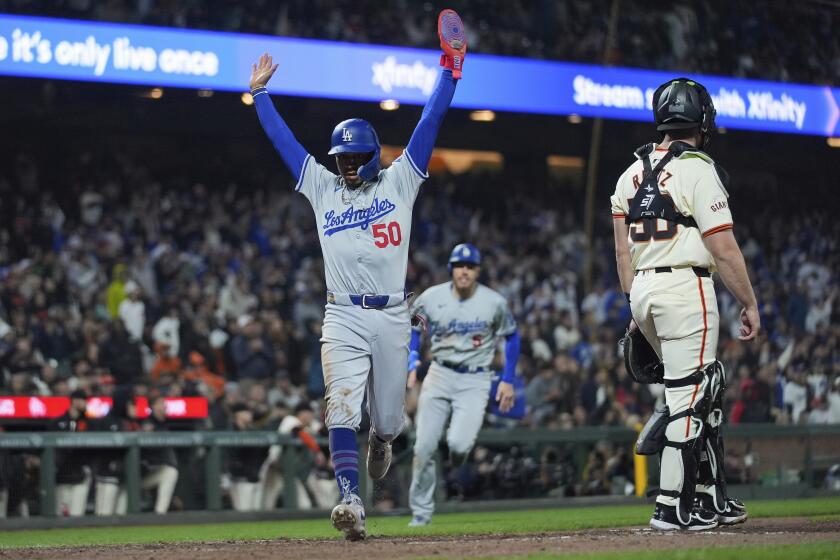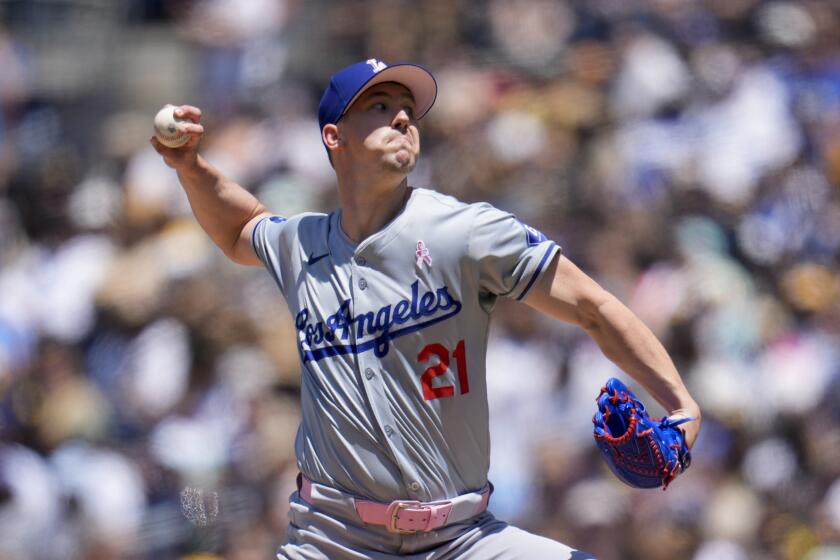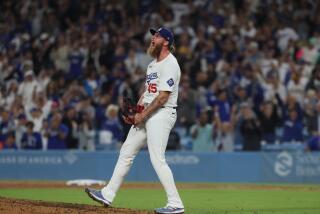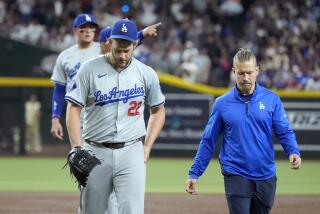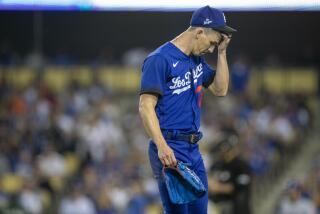‘It’s tough’: Slumping Chris Taylor’s playing time cut as Dodgers face roster questions
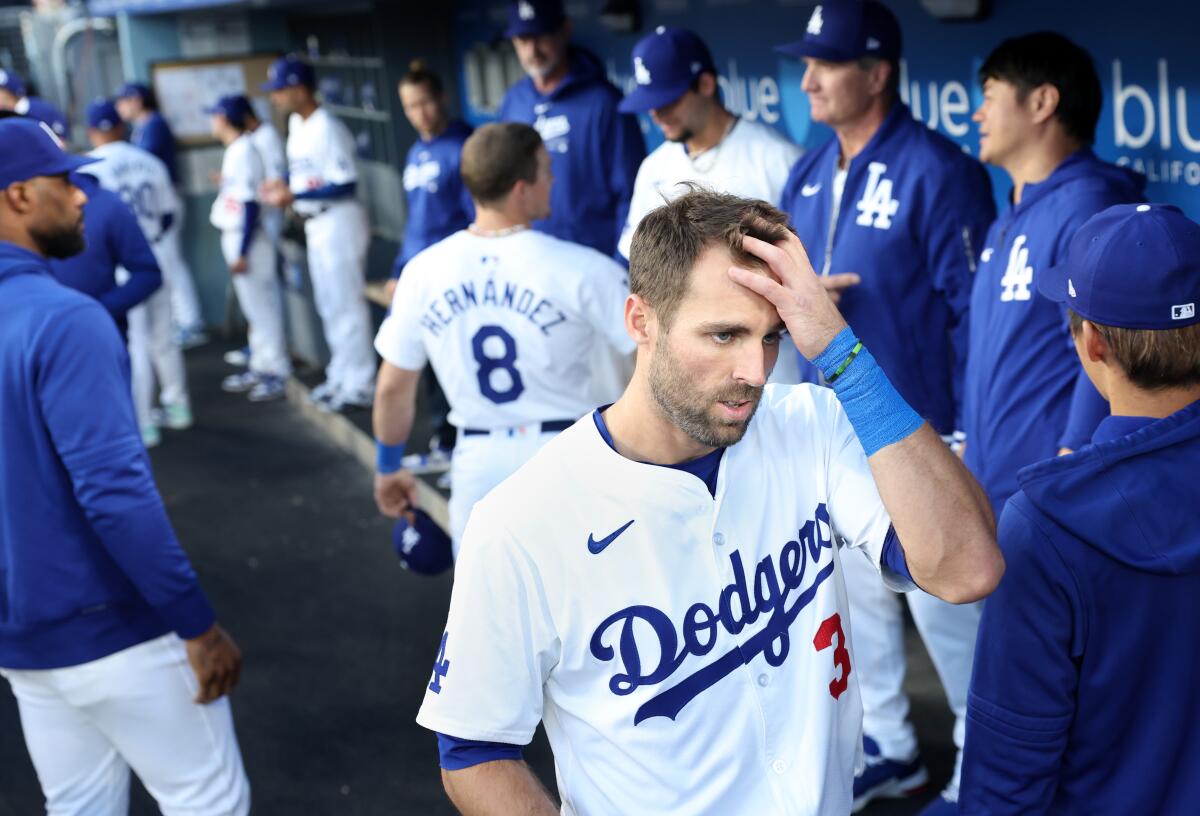
SAN FRANCISCO — Chris Taylor thought he was doing the right thing this offseason.
Coming off a couple of underwhelming, injury-plagued and frustratingly inconsistent campaigns, the team’s longtime super-utility man tried to get back to the basics this winter.
He attempted to rediscover his old potent swing.
Seven years removed from the major swing change he made early in his Dodgers career — one that turned the lightly touted outfield prospect into an everyday player, a 2021 All-Star and the recipient of a $60-million contract before the 2022 season — Taylor tried to reverse-engineer a similar process this offseason.
He and Dodgers coaches pinpointed the traits that transformed his hitting profile all those years ago, before time, age and injuries led to a steady decline in production.
Will Smith’s two-run double in the 10th inning provides the difference in a game that has several lead changes.
Taylor spent his offseason focused on the mental cues, technical feels and mechanical principles that once made him a star, trying to re-sync the timing of his leg kick, the positioning of his hands and the path the bat would travel through the swing.
“I wanted to trust it was eventually gonna work,” Taylor said recently.
Instead, in a woeful start to what has been a career-worst season, the 33-year-old is looking even more lost than ever before.
A quarter of the way through the campaign, Taylor has been one of the worst hitters in the majors.
He is four-for-56, registering a .071 batting average that ranks last (by 14 points) among the 360 big leaguers with at least 50 plate appearances so far. He has 28 strikeouts, fanning at a higher rate than all but two other MLB hitters. And despite appearing in just 25 of the Dodgers’ first 43 games, he has accumulated a negative-0.7 in wins above replacement, a shockingly poor mark for a veteran once considered a key cog in the Dodgers’ powerhouse lineup.
“He’s been in-between and uncertain,” manager Dave Roberts said. “I’d like to think there’s improvement in his work. I know the effort is there. So, you know, we’ll see. I’ll keep trying to find opportunities to get him in there.”
Only, when it comes to playing time, Taylor’s performance has left Roberts with little choice.
Taylor entered the year as a part-time player, starting only 12 of the team’s first 22 games, but over the last month he has been relegated to the end of the bench.
He has made only five starts since April 20, and only one since May 1. Entering Tuesday, he hadn’t featured in any game in a week, making his most recent appearance on May 7 when he struck out in two at-bats as a midgame replacement.
Taylor’s next start probably won’t come until Thursday, Roberts said, with the Dodgers slated to face two more right-handed pitchers in their current series against the San Francisco Giants (all but three of Taylor’s starts have been against lefties this year).
And as outfielder Jason Heyward nears his return from a back injury, Taylor’s place with the Dodgers has become a point of speculation.
When Heyward returns — which could be as soon as next week, as he begins a rehab assignment with triple-A Oklahoma City on Tuesday — the Dodgers will have to clear a roster spot.
Slumping second-year center fielder James Outman might be a more logical candidate, since the club could option him to the minors where he’d get more regular playing time.
However, Outman’s poor numbers (he is batting .150 with 35 strikeouts in 100 at-bats) are still markedly better than Taylor’s. And while Outman has continued to get semi-regular at-bats of late (in part because he is a left-handed hitter), Taylor has now gone five games without one.
“He’s a hot-and-cold guy,” Roberts said of Taylor. “He’s a streaky hitter, always has been.”
Indeed, when Taylor reinvented his game in 2017, it came with potential side effects.
The swing change turned him from a slap-hitting bench player to an unexpected power threat, slugging 78 home runs from 2017 to 2021. But, it also forced him to abandon the mechanics he developed coming up. He was a better player. But also one prone to high strikeout totals and extended slumps, especially when his “high-maintenance” swing, as Roberts has often called it, would get out of whack.
“When you make a swing change, it usually feels pretty good when you first do it,” Dodgers special assistant Chris Woodward, who has coached Taylor on and off since the player’s days in the Seattle Mariners farm system, said of his swing last year.
“But then once it becomes normal, your body adapts and your brain adapts,” Woodward added. “You get a little numb to what it feels like.”
That dynamic has underlined Taylor’s difficulties in recent years, as he has gotten older and battled the effects of multiple injuries, most notably a November 2021 elbow surgery he underwent just weeks before signing his four-year, $60-million contract with the Dodgers.
“The last couple of years, it hasn’t worked as well,” said Taylor, who batted just .228 in 2022 and 2023 combined. “It’s been more of a struggle to sync up everything.”
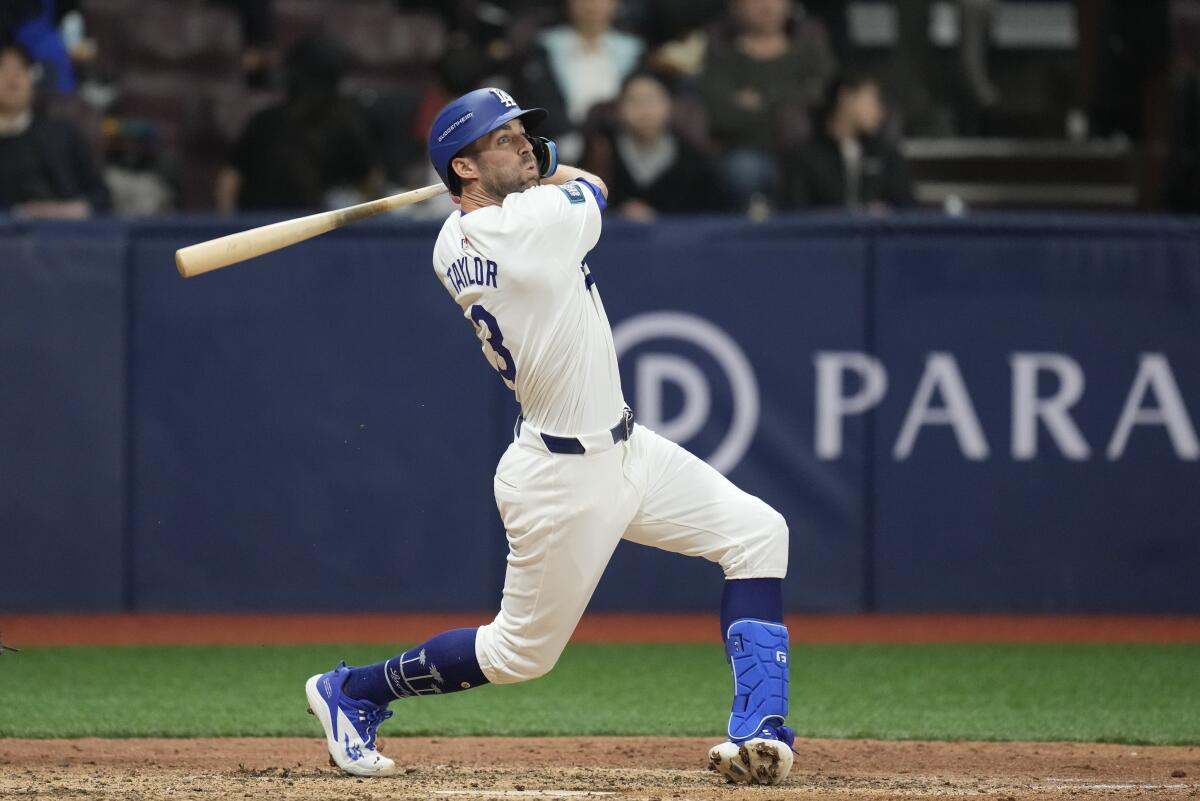
This year, that “struggle” has turned into an all-out war, with Taylor’s offseason work backfiring in harrowing fashion.
Instead of a return to old form, Taylor started developing more “bad habits” as he ramped up during the spring.
“There were moments it was good,” he said. “But bottom line was it was hard for me to repeat it and be consistent with it.”
Ever determined, Taylor forged ahead nonetheless, desperate for something to eventually click, for his declining results to ultimately turn.
“He’s been getting underneath balls,” hitting coach Aaron Bates said. “He has a good idea of what he wants to do and what he wants to feel. But I think sometimes, he [struggles] making sure his body can get to those positions, get to those ‘feels.’”
Lately, Taylor has finally resigned himself to making more changes, searching for anything that can help him cut down on strikeouts (his current K-rate is over 41%), square up fastballs (he is batting .067 against the pitch this year) and provide some production for a Dodgers team aiming to contend for a World Series.
“It’s always a risk when you make a swing change,” Taylor said. “And it just didn’t happen the same way. Sometimes, it’s harder to go back [to your old swing]. And I just rode it to the ground.”
The Dodgers do have a few potential options when it comes to Taylor’s roster spot.
They could always ask him to go to the minors to work on his swing, as the Houston Astros recently did with struggling veteran José Abreu (though, because Taylor has more than five years of MLB service time, he would have to consent to such a request).
If they find there is some physical ailment contributing to his problems, they could put him on the injured list and send him on a rehab assignment, something the club did with Max Muncy when he was struggling in a return from offseason elbow surgery in 2022 (though, there has been no indication that Taylor’s problems are injury-related).
The nuclear option would be cutting Taylor outright, and eating the nearly $30 million left on a contract that runs through the end of next season.
Walker Buehler delivered a shaky performance during his second start since his second Tommy John surgery, but the Dodgers aren’t worried yet.
The likelihood of that, however, still seems relatively slim. The Dodgers don’t like giving up on veteran players and taking on dead money. And there is no indication their patience with Taylor’s slump has already run that thin.
“CT has been working really hard,” Roberts said. “It’s tough.”
Something might have to give at some point — either when Heyward returns, or when other inevitable roster crunches arise later in the year, or if Taylor’s league-worst batting average continues to linger into the summer.
For now, Roberts said Tuesday, Taylor is “certainly not forgotten.”
But unless his numbers rise, that faith won’t last forever.
More to Read
Are you a true-blue fan?
Get our Dodgers Dugout newsletter for insights, news and much more.
You may occasionally receive promotional content from the Los Angeles Times.

